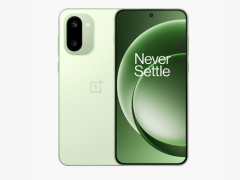- Home
- Wearables
- Wearables News
- Facebook Working to Make VR Headsets Thinner and Lighter
Facebook Working to Make VR Headsets Thinner and Lighter
Facebook has revealed that the glasses-like prototype VR headset with a display measuring 8.9mm thick.

The VR headset replaces the refractive lens with holographic optics
Facebook is trying to make VR glasses thinner and more "socially acceptable." The company in a new research paper has revealed its glasses-like prototype virtual reality (VR) headset with a display measuring 8.9mm in thickness, which is about the same as a regular smartphone. The social media giant says that one way to achieve "sunglasses"-like VR headsets, is by replacing the refractive lens with holographic optics. It essentially means that the new optics will allow the light to reach human eyes in a smaller distance, unlike regular VR gear that require to be bulky to accommodate thick lens to change the angle of light from the display to our eyes.
The new optics will further help to keep the form factor and weight of the VR headset much lighter, the Facebook research paper highlights. The findings are explained in the research paper led by Facebook Reality Labs. The researchers note that to achieve thin, lightweight, and high-performance near-eye displays for virtual reality, they have combined "holographic optics, directional backlighting, laser illumination, and polarization-based optical folding."
"Current [VR] headsets still have box-like form factors and provide only a fraction of the resolution of the human eye. Emerging optical design techniques, such as polarization-based optical folding, or 'pancake' optics, promise to improve performance while reducing size." the research notes.
Pancake optics essentially bounce light back and forth inside a lens before reaching the human eyes. This effectively increases the distance between the display panel and focusing optic without increasing physical size. The research states that it allows the focusing optics to be placed physically close to the display panel, "while virtually acting as if they were much further away, providing a tremendous advantage in compactness."
Limitations of the thin near-eye VR headset
The researchers pointed out that there are several limitations with the sunglasses-like prototype VR headset, therefore indicating its launch is still years away. Currently, the prototype outputs in monochrome, and it is yet to achieve a full-colour display.
Similarly, the headset will have to address challenges like battery life, device connections, and so on.
Facebook-owned Oculus VR in 2019 launched Oculus Rift S virtual reality headset for $399 (roughly Rs. 30,100).
WWDC 2020 had a lot of exciting announcements from Apple, but which are the best iOS 14 features for India? We discussed this on Orbital, our weekly technology podcast, which you can subscribe to via Apple Podcasts or RSS, download the episode, or just hit the play button below.
Get your daily dose of tech news, reviews, and insights, in under 80 characters on Gadgets 360 Turbo. Connect with fellow tech lovers on our Forum. Follow us on X, Facebook, WhatsApp, Threads and Google News for instant updates. Catch all the action on our YouTube channel.
Related Stories
- Samsung Galaxy Unpacked 2025
- ChatGPT
- Redmi Note 14 Pro+
- iPhone 16
- Apple Vision Pro
- Oneplus 12
- OnePlus Nord CE 3 Lite 5G
- iPhone 13
- Xiaomi 14 Pro
- Oppo Find N3
- Tecno Spark Go (2023)
- Realme V30
- Best Phones Under 25000
- Samsung Galaxy S24 Series
- Cryptocurrency
- iQoo 12
- Samsung Galaxy S24 Ultra
- Giottus
- Samsung Galaxy Z Flip 5
- Apple 'Scary Fast'
- Housefull 5
- GoPro Hero 12 Black Review
- Invincible Season 2
- JioGlass
- HD Ready TV
- Laptop Under 50000
- Smartwatch Under 10000
- Latest Mobile Phones
- Compare Phones
- OnePlus 15R
- Realme Narzo 90x 5G
- Realme Narzo 90 5G
- Vivo S50 Pro Mini
- Vivo S50
- OPPO Reno 15c
- Redmi Note 15 5G
- Redmi Note 15 Pro 5G
- Asus ProArt P16
- MacBook Pro 14-inch (M5, 2025)
- Infinix Xpad Edge
- OnePlus Pad Go 2
- OnePlus Watch Lite
- Just Corseca Skywatch Pro
- Acerpure Nitro Z Series 100-inch QLED TV
- Samsung 43 Inch LED Ultra HD (4K) Smart TV (UA43UE81AFULXL)
- Asus ROG Ally
- Nintendo Switch Lite
- Haier 1.6 Ton 5 Star Inverter Split AC (HSU19G-MZAID5BN-INV)
- Haier 1.6 Ton 5 Star Inverter Split AC (HSU19G-MZAIM5BN-INV)

















